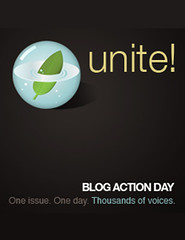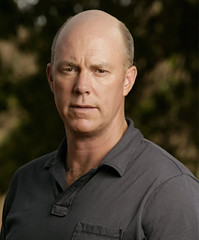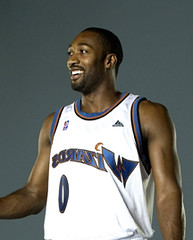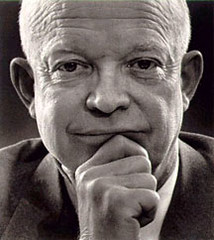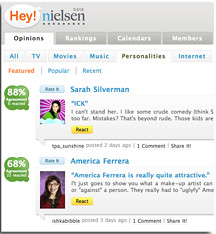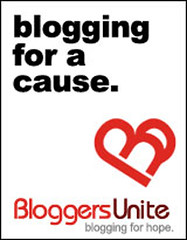When Anthony Miranda was playing drums for Johnny Mathis, he needed to add metal sounds to a hand drum set. But what he didn’t know ten years ago was that a single YouTube video would garner more attention for his solution than he ever received touring with the Grammy Award-winning singer and songwriter or attending trade shows and conventions for five years.
Now, Miranda will be considered as an act featured on Late Night With David Letterman. Representatives from the show caught Miranda's demonstration of his invention, Fingerstix, on what appeared to be a spontaneous YouTube performance in a restaurant.
“My marketing director brought up filming a YouTube video,” says Miranda. “So I concepted the idea of doing it in a restaurant with plates and glasses.”
In many ways, dinner plate performances had previously been proven. Always the entertainer, Miranda had played in restaurants for his friends for years. His talent is amazing; the video a must see. Almost immediately following the launch of the video, Miranda noted increased exposure and sales on his Web site, where you can catch several more dazzling clips.
“Any great idea has to find the right path to market,” Miranda told me. “I’m an inventor and creative person by nature, but even I knew finding the right people to help me take my product from an idea and onto people’s hands was key.”
Five years ago, when Miranda first decided to take his invention public, he went the traditional route. He took it out to trade shows like NAMN and had some success with resellers. It made sense. After all, Fingerstix were responsible for the unique percussion sounds on several albums and movie soundtracks
“I also used them in concerts and clinics and sold numerous sets to the attendees,” he said. “But all of these traditional methods targeted a very focused segment of the market.”
Given Miranda has performed with Mathis, Madonna, Natalie Cole, Gladys Knight, and Tom Jones, one would assume the traditional route would have been enough. However, Miranda gives ample credit to the power of social media.
“It [the video] opened up Fingerstix to a much broader audience,” says Miranda. “The YouTube video was shot in one take and the Fingerstix team posted it a couple days later. I couldn’t believe that hundreds of people watched it shortly after and they still do.”
Miranda says that the Fingerstix team has always used some guerilla marketing techniques to improve sales, but nothing like the YouTube video. Currently, they are working on his next YouTube video. And while Miranda wouldn't give up the concept, he did tell me that it is sure to be sensational.
I have little doubt about that. Who knows? Maybe the next YouTube video will include Hilary Duff. It could happen. Miranda recently added movie producer to his long list of credits and credentials.

Now, Miranda will be considered as an act featured on Late Night With David Letterman. Representatives from the show caught Miranda's demonstration of his invention, Fingerstix, on what appeared to be a spontaneous YouTube performance in a restaurant.
“My marketing director brought up filming a YouTube video,” says Miranda. “So I concepted the idea of doing it in a restaurant with plates and glasses.”
In many ways, dinner plate performances had previously been proven. Always the entertainer, Miranda had played in restaurants for his friends for years. His talent is amazing; the video a must see. Almost immediately following the launch of the video, Miranda noted increased exposure and sales on his Web site, where you can catch several more dazzling clips.
“Any great idea has to find the right path to market,” Miranda told me. “I’m an inventor and creative person by nature, but even I knew finding the right people to help me take my product from an idea and onto people’s hands was key.”
Five years ago, when Miranda first decided to take his invention public, he went the traditional route. He took it out to trade shows like NAMN and had some success with resellers. It made sense. After all, Fingerstix were responsible for the unique percussion sounds on several albums and movie soundtracks
“I also used them in concerts and clinics and sold numerous sets to the attendees,” he said. “But all of these traditional methods targeted a very focused segment of the market.”
Given Miranda has performed with Mathis, Madonna, Natalie Cole, Gladys Knight, and Tom Jones, one would assume the traditional route would have been enough. However, Miranda gives ample credit to the power of social media.
“It [the video] opened up Fingerstix to a much broader audience,” says Miranda. “The YouTube video was shot in one take and the Fingerstix team posted it a couple days later. I couldn’t believe that hundreds of people watched it shortly after and they still do.”
Miranda says that the Fingerstix team has always used some guerilla marketing techniques to improve sales, but nothing like the YouTube video. Currently, they are working on his next YouTube video. And while Miranda wouldn't give up the concept, he did tell me that it is sure to be sensational.
I have little doubt about that. Who knows? Maybe the next YouTube video will include Hilary Duff. It could happen. Miranda recently added movie producer to his long list of credits and credentials.








